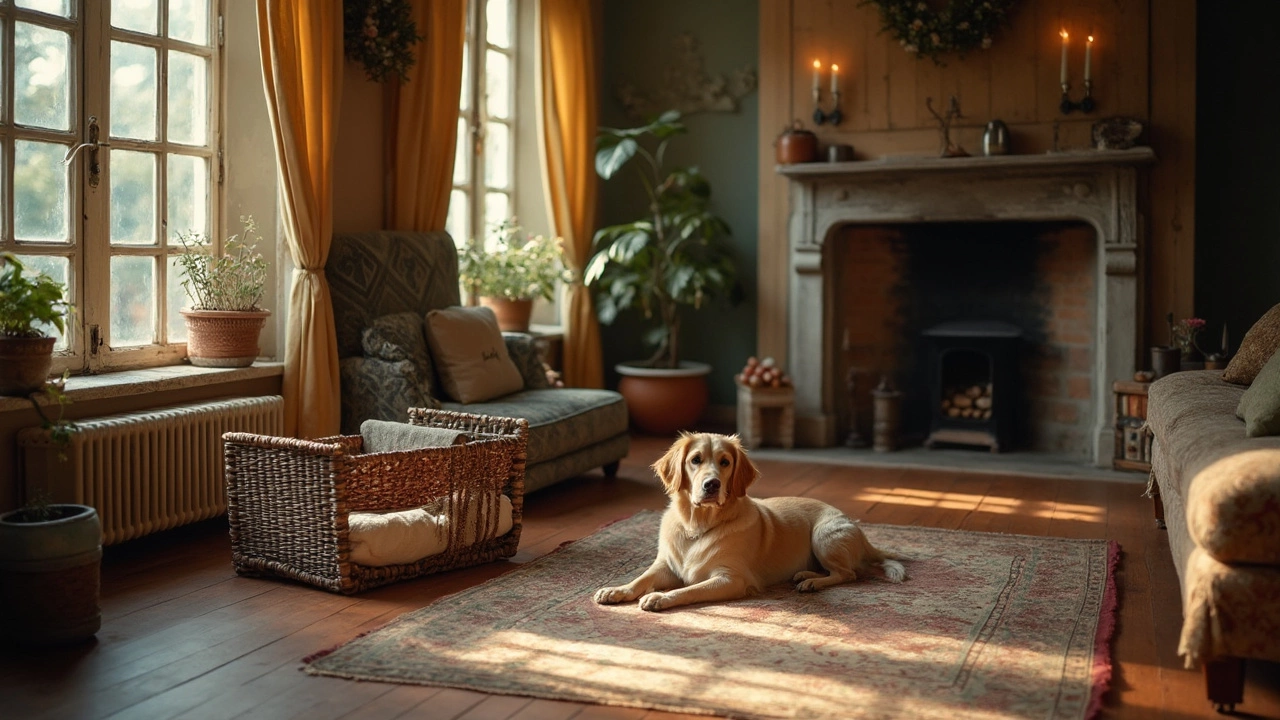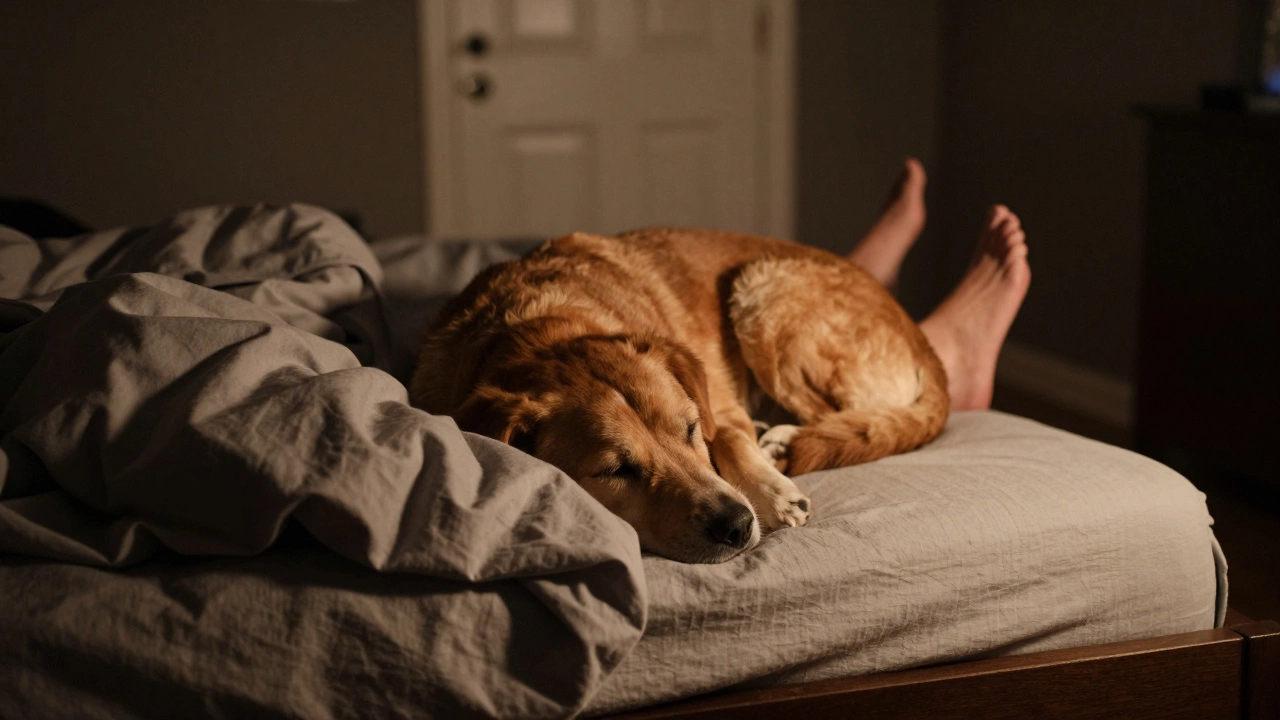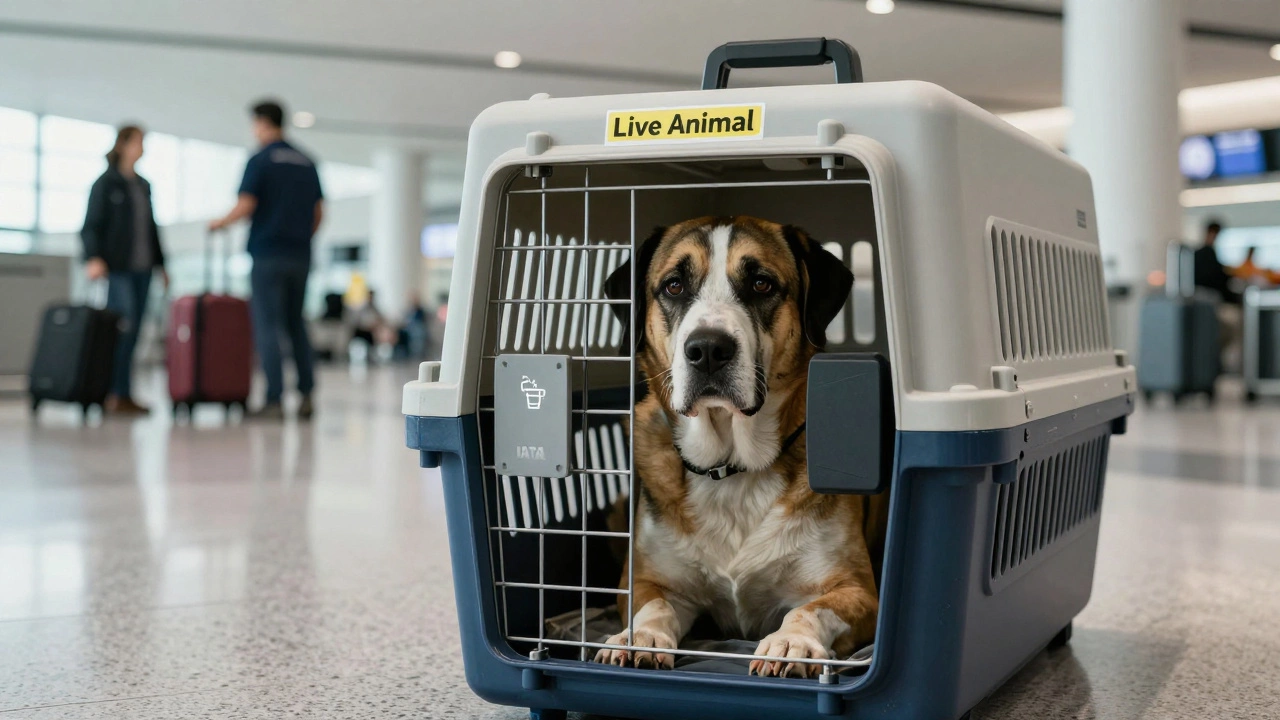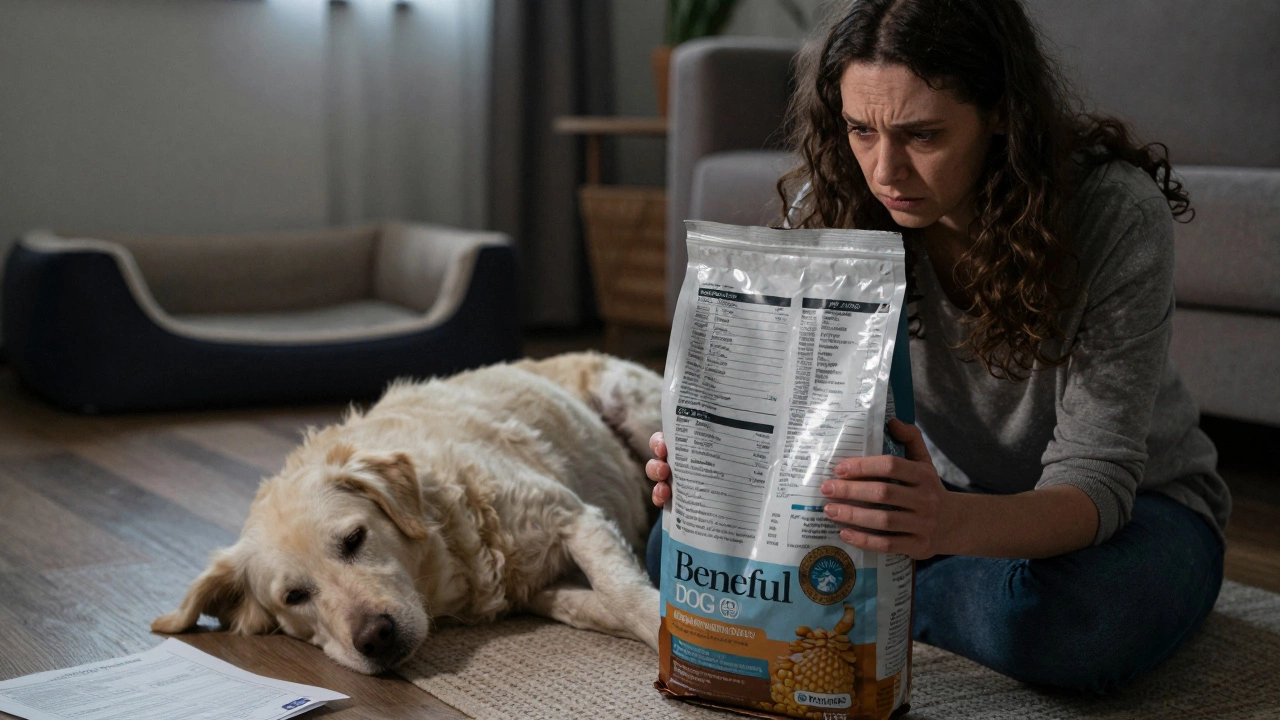It's a debate as old as the domestication of dogs: should we let our furry friends share our bed at night? For many, the nightly ritual of snuggling up with their dog offers a sense of peace and security. But beyond affection, what drives this behavior in dogs? And is it truly beneficial for both parties involved?
By peeking into the past, we uncover that humans and dogs have huddled together for warmth and protection for thousands of years. This deeply ingrained tradition has likely influenced modern-day preferences among our canine companions. However, the emotional benefits aren’t one-sided; humans often find comfort and stress relief in the rhythmic breathing of their dog lying nearby.
Yet, sharing your bed with your dog isn't without its challenges. Concerns over sleep disruption, allergies, and cleanliness often arise. So, while the thought of a shared snooze seems idyllic, it's essential to weigh the potential downsides. Every dog is unique, and factors such as breed and individual personality can affect how well they adapt to sleeping with humans.
If you've decided to welcome your dog into your sleeping space, a few tips can ensure your nighttime routine remains restful. Understanding your dog's needs and maintaining a clean and comfortable environment is key. By considering these aspects, you can make sure sleepytime is enjoyable for both you and your trusty canine companion.
- Historical Perspective of Dogs Sleeping with Humans
- Psychological Benefits for Dogs and Humans
- Potential Downsides and Concerns
- Impact of Dog Breed and Personality
- Health and Hygiene Considerations
- Tips for Creating the Ideal Shared Sleep Environment
Historical Perspective of Dogs Sleeping with Humans
The relationship between humans and dogs has evolved remarkably, but one aspect that remains consistent is their role as trusty companions, often sharing our sleeping spaces. The practice of dogs sleeping with humans dates back to ancient times. During the early days of humanity, this behavior was not just about companionship but also survival. Dogs were domesticated from wolves around 15,000 years ago, and their roles in human society quickly expanded from hunting aides to guardians. As the bond strengthened, it was only natural for them to share resting spaces. On cold nights, the warmth of a dog could be the difference between comfort and cold for our ancestors.
Evidence from archaeological discoveries suggests that ancient humans often buried their dogs with them, indicating a close-knit bond. A famous example is the Bonn-Oberkassel dog, the first known burial alongside human remains, dated at about 14,200 years ago. This historical context shows these relationships were deeply valued. Imagine living in a cave or an open plain, relying on your dog for protection, alerting you to dangers long before you could sense them yourself. This setup not only provided safety but also laid foundational trust and emotional support—a precursor to our modern understanding of the mutual benefits of sleeping with dogs.
The role of breeds also plays a part in this evolutionary journey. Originally, dogs were unselected for specific traits, but as civilizations established themselves, particular breeds began emerging with specific roles in mind. Herding, guarding, and companionship duties shaped the type of dogs humans preferred. These roles dictated how closely dogs lived with humans. While shepherds might have preferred their herding dogs outside with livestock, smaller companion dogs often found their way into beds, acting as both protectors and bed-warmers.
Interestingly, different cultures held varied views on co-sleeping with dogs. The ancient Romans, for example, were not particularly fond of sharing their beds with dogs; however, in Eastern cultures, dogs were often found inside homes, even part of royal court settings. In regions like Tibet, Lhasa Apsos were loyal companions often found in the quarters of monks and the noble classes, where they served as alert companions and warm bedfellows on cold nights. As societies evolved, so did attitudes towards dogs and their place in human homes and beds.
The practice of co-sleeping with dogs was also common among native populations in North America. For Native American tribes, dogs were essential community members. This bond was not merely practical but spiritual, as many cultures believed in the sacred nature of dogs, integrating them deeply into family and societal life. Beliefs and practicalities reinforced each other, establishing dogs not only as pets but integral family members sleeping close to their human caretakers.
Today, the historical roots of dogs sleeping with humans can still be seen in modern habits. While we've moved from caves to cozy bedrooms and the threats of large predators have diminished, the need for companionship and emotional support remains. Dogs, with their unwavering loyalty and warmth, continue to find their place beside us, wrapping us in a blanket of historical continuity dating back thousands of years. This enduring bond highlights a remarkable relationship that thrives on trust, companionship, and mutual comfort.
Psychological Benefits for Dogs and Humans
The shared companionship of a dog and their human during sleep offers a tapestry of psychological benefits. At the core, this cohabitation strengthens the bond that traces back thousands of years to when humans first welcomed eager wolf-dogs into their circles. Dogs, driven by their instinctive pack nature, find profound comfort and security in the presence of their human. This companionship nurturing extends beyond mere instinct, plunging into emotional wellness.
When a dog snuggles in next to their owner, it can lead to the release of oxytocin, a hormone associated with affection and stress reduction. For people, having their canine companion nearby can significantly alleviate symptoms of anxiety and depression. Studies have shown that the sound of rhythmic breathing or the gentle touch of a pet can help reduce heart rate and blood pressure. It's a symbiotic rhythm; a tranquility where heartbeats find sync and mutual reassurance grows.
The benefits experienced by humans parallel those of their furry friends. Just as humans benefit from a stress-relieving nightly cuddle, dogs themselves feel safer and more content. There is less chance of them experiencing nightly anxiety, which in turn can lead to fewer behavioral problems. This mutualistic relationship fosters an exchange of unspoken emotional support, echoing the sentiment shared by Charles Darwin, who noted, "The love for all living creatures is the most noble attribute of man."
"Animals are such agreeable friends—they ask no questions; they pass no criticisms." - George Eliot
Moreover, the routine of sleeping together builds trust and assurance within dogs, who thrive on consistent patterns and environments. This sense of stability can be particularly beneficial for rescue dogs or those who have experienced trauma, as it helps rebuild their confidence and sense of belonging. It's not just about where they sleep; the process of establishing such nightly rituals can be a therapeutic exercise that promotes overall well-being for both parties involved.
There's a caveat, though: not all dogs and humans may find the same comfort in this arrangement. Some may prefer personal space or different sleep patterns. Still, when both partners—canine and human—are in harmony with the idea, the emotional warmth and security shared can turn bed-sharing into a cherished nightly ritual, crafting a narrative of closeness that transcends mere affection into innate wellness.
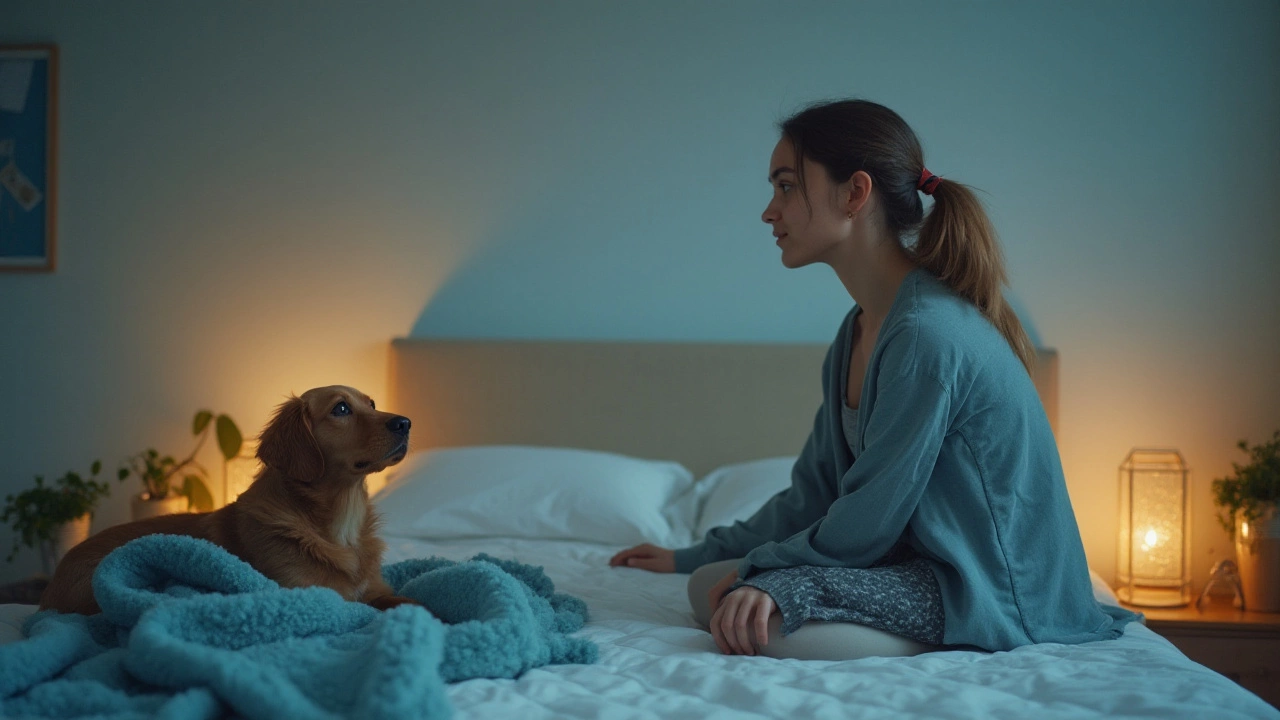
Potential Downsides and Concerns
While the idea of letting your dogs sleep alongside you can be comforting and endearing, there are certain drawbacks worth considering. One of the biggest issues could be sleep disruption. Dogs can be rather restless companions, shifting and repositioning throughout the night, which might disturb your sleep cycle. This can be particularly problematic if you struggle with light sleeping or insomnia, as your furry bedmate might unconsciously cause you to wake up several times during the night.
There's also the matter of allergens. Many people are mildly allergic to pet dander, which is comprised of tiny flecks of skin shed by animals with fur or feathers. Even if you're not severely allergic, constant exposure while you sleep could exacerbate minor symptoms such as sneezing, itchy eyes, and a runny nose. Dr. Clifford Bassett, a well-known allergist, suggests,
"Those who are sensitive to pet allergens might find their allergies flare up more often when sharing sleeping spaces with their pets."
Another significant concern is cleanliness. Dogs, no matter how well-groomed, tend to bring dirt, bugs, and bacteria from outside into the home. Sharing a bed means sharing all those microscopic hitchhikers, which could compromise your sleeping environment's hygiene. Regularly washing bedding and ensuring your dogs are suitably cleaned after outdoor activities could help, but is essential to think about your tolerance and cleanliness standards.
An often-overlooked problem is behavior-related issues. Once a dog becomes accustomed to sleeping in your bed, they may develop possessive behavior over the space. This can lead to unwanted growling or aggression when you attempt to move them, or if another pet or human tries to join. It's crucial to establish consistent boundaries early to prevent space-related dominance patterns.
Consider the impact on your relationships as well. Having a dog in bed can interfere with intimate moments shared with your partner, which can, in turn, affect your relationship dynamic. It's crucial to have buy-in from all household members before making a decision. Also, if kids are involved, ensure there is an understanding of any potential safety concerns, particularly with young children who might not sleep as soundly or react predictably to a pet's movements.
In light of these potential downsides, it's essential to analyze the individual circumstances surrounding you and your pets. Assess factors like your dog's temperament, size, habits, and your own health or allergy concerns. This balanced approach will help ensure you and your furry friend enjoy secure and restful nights, whether sharing a bed or otherwise.
Impact of Dog Breed and Personality
When it comes to the sleeping preferences of our canine companions, both breed and personality play pivotal roles. Different breeds have distinct traits, and these often dictate how a dog behaves when it's time to hit the hay. For instance, breeds like the Bichon Frise or the Cavalier King Charles Spaniel are known for their affectionate nature, often craving close proximity to their humans. This means they’re more likely to enjoy sharing a bed. On the other hand, independent breeds such as the Shiba Inu or Afghan Hound might prefer their own space, choosing to sleep separately.
Dive a little deeper, and the picture gets even more complex. Dogs with a history of being working breeds, such as Border Collies, often have boundless energy. While they may love being near their humans, co-sleeping can sometimes turn into a wrestle match if they decide it's playtime. Meanwhile, breeds associated with guarding, like Rottweilers or Dobermans, might find comfort in being close during the night, symbolizing their protective tendencies.
Personality shouldn't be underestimated either. No two dogs are the same, even within a breed. A timid or recently adopted pup may initially prefer the security of being closer to their human during sleep, thanks to that soothing sense of safety. An extroverted dog, however, might only occasionally hop into bed, enjoying the freedom of movement without constraint. Interestingly, a study by the Mayo Clinic found that many dog owners sleep better with their pet nearby, suggesting that the presence of a dog, regardless of breed, can offer calming psychological benefits.
"Dogs are not our whole life, but they make our lives whole." – Roger A. Caras, noted writer and president emeritus of the American Society for the Prevention of Cruelty to Animals (ASPCA). His words encapsulate how deeply intertwined our lives are with our pets, including sharing living—and sleeping—spaces.
Training and past experiences also shape a dog's sleeping preferences. Puppies raised in a loving environment, accustomed to close company from a young age, often retain this habit into adulthood. In contrast, dogs that have experienced trauma or neglect may struggle with the intimacy of co-sleeping, needing time and space to develop trust. Dog beds designed for specific breeds or sizes can also influence a dog's choice, providing a comfortable alternative even when they prefer not to share a human bed.
A fascinating facet of the canine world is that some dogs are just night owls in their own right. Breeds like the Beagle or even the soft-footed Greyhound can have periods of nocturnal activity, making full-time co-sleeping more challenging for light sleepers. In these cases, the behavior might be managed with structured walks and regular exercise throughout the day, ensuring that both human and dog can enjoy a peaceful night.
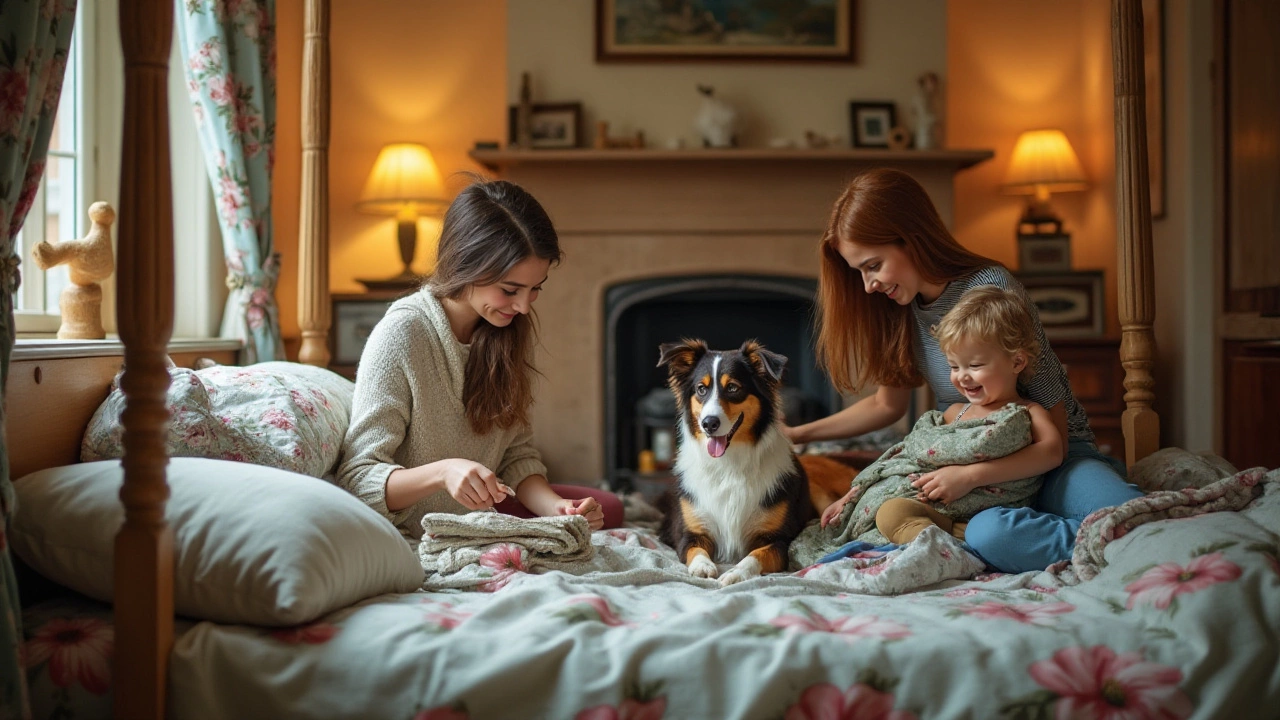
Health and Hygiene Considerations
Sharing your bed with dogs can present certain health and hygiene challenges, which owners need to consider seriously. While the act itself is driven by affection and the comfort of companionship, various factors must be weighed to maintain a healthy living environment. One key aspect is the potential for allergies. Even if you're not allergic to dogs, their fur, dander, and the pollen or dust they bring in on their coat can be allergens. This exposure can incrementally build up without you realizing it, leading to symptoms like sneezing or coughing over time.
Another important factor is cleanliness. Dogs, by nature, will get dirty, whether they’ve been rolling in mud or just enjoying an adventurous walk. Allowing a dog to sleep on your bed means these elements can easily transfer to your sheets and pillows. Regular grooming and cleaning routines for your dog are crucial, such as brushing their coat and cleaning their paws before bedtime. This can mitigate the transfer of dirt particles and maintain the overall cleanliness of your sleeping environment, ensuring both you and your pet benefit from a good night's sleep.
Moreover, there is always the risk of parasitic infections if your dog is not regularly treated for fleas and ticks. These pests can easily hop from your dog to the bedding, putting you at risk. Consistently using veterinarian-recommended treatments can prevent flea infestations, and regular checks help catch potential problems early. According to Dr. Karen Becker, a renowned veterinary expert, "It is essential to maintain a strict hygiene routine for your pet if they share your sleeping space. Regular vet visits and treatments are crucial."
From a respectful perspective, it’s not only about preventing physical discomforts but also considering the psychological aspect of co-sleeping arrangements. Some dogs might become too attached or territorial about their spot on the bed, leading to behavioral issues. Keeping an eye on your dog's reactions and ensuring they are comfortable yet obedient is part and parcel of a healthy human-pet relationship. Having a disposable cover or using blankets specifically designated for your pet can provide an extra layer of protection against hair and potential messes.
Maintaining a Clean Sleep Space
Beyond individual hygiene practices, keeping your bed and bedroom environment clean is important. Frequent washing of bed linens, along with vacuuming and dusting, especially in areas where the dog lounges or sleeps, can prevent allergen accumulation and keep your space pleasant. While daily clean-ups might seem excessive, it’s all about balancing comfort with health! Moreover, using washable covers for your dog’s resting spot on your bed can simplify your cleaning routine.
Finally, it’s beneficial to consider your pet's health as part of the hygience equation. Regular veterinary check-ups do not only ensure your dog's vaccination is updated, but they also help catch any underlying issues early on. This preventive measure not only keeps your pet healthy but also benefits you as an owner by minimizing the health risks associated with cohabitating closely with your animal companion. With these strategies in mind, sleeping together can be both comforting and safe for you and your furry friend.
Tips for Creating the Ideal Shared Sleep Environment
Creating the perfect sleep setting for you and your dog requires balancing comfort, hygiene, and personal space. Dogs, much like humans, need restful sleep to maintain their health and happiness. When sharing your bed with your canine friend, you want to ensure you're both getting the best rest possible. The first step is to establish boundaries. While cuddling with your dog can be delightful, you should designate specific areas of the bed for human and dog. This not only preserves your sleeping space but also helps to manage your pup's sleep habits. Some dogs, if given free rein, might slowly shift until space becomes limited for their human companion. Consider using their favorite blanket or a small pillow on their section of the bed to give them a defined, comforting boundary.
Hygiene is another important factor to consider in the shared sleeping arrangement. Regular grooming and cleaning can make a world of difference, both for your comfort and your dog's. Ensure that your pet's fur, nails, and paws are clean, especially after outdoor adventures. To limit shedding on your bed, brush your dog's coat daily. This keeps their fur healthy and minimizes the stray hairs in your bedding. Additionally, washing your bedding frequently can help keep the environment fresh and free from allergens. If allergies are a concern, hypoallergenic pillowcases and sheets might be beneficial. Using a mattress protector is another smart move as it provides a barrier against bacteria and moisture.
Comfort is key to a good night’s sleep, so consider your dog's needs for warmth and support. Dogs, depending on size and breed, have different temperature preferences at night. A dog bed or blanket can supply the extra warmth they may need, particularly for short-haired breeds or those that get chilly easily. An orthopedic bed surface or extra padding might also be appreciated by older dogs or those with joint issues. Pay attention to your dog’s behavior; if they're restless, it might be worth re-evaluating the comfort of their sleeping space. As a pet owner, tuning into these subtle cues can enhance both your and your dog's quality of sleep.
Creating a consistent nighttime routine can also facilitate better sleep for everyone. Dogs are creatures of habit and tend to thrive on routine. Establish a pre-bedtime ritual that might include a short walk to expend energy, followed by a calming period where lights and sounds are dimmed or reduced. This signals to your dog that it's nearing bedtime, helping them to settle down more quickly once you hit the bed. You can also use this time for bonding activities like gentle grooming or petting, which can be both soothing for your dog and rewarding for you.
Finally, assess the nature of your relationship with your dog. Each dog is unique, and their comfort with sharing a sleeping space can vary greatly. For instance, a dog that exhibits dominance or territorial behavior might need additional training or alternative sleeping arrangements to maintain harmony. Conversely, a more timid dog might feel secure sleeping close to you, fostering trust and companionship. As respected author and dog behaviorist Cesar Millan notes, "Dogs follow calm, assertive energy," so ensuring you’re in the right mindset before bed can help set the tone for a restful night.



